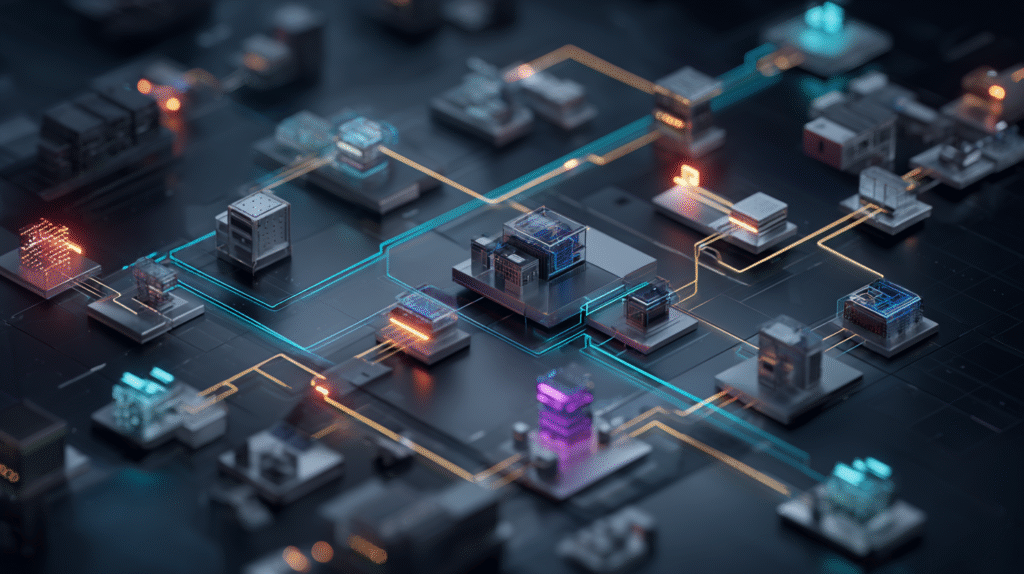
The Personalization Paradox
We live in an era where “personalization” is the holy grail of digital marketing. Every brand, every content creator, every website owner dreams of delivering that perfectly tailored experience, the one that makes a user feel seen, understood, and utterly unique. And for good reason: 71% of consumers now consider it “critical” for brands to anticipate their needs and serve up relevant content in the moment. Yet, here’s the rub: only 34% believe brands actually deliver on that promise, according to MarTech.
This isn’t a failure of ambition; it’s a failure of infrastructure. We’ve been so captivated by the dazzling capabilities of AI to generate content that we’ve overlooked the messy, complex reality of delivering it at scale. AI can write a thousand variations of an email subject line, but if your internal systems can’t handle the sheer volume, approval workflows are a tangled mess, and assets are scattered across a dozen platforms, then all that AI-powered brilliance just sits in a digital drawer.
The Unsung Hero: Your Content Supply Chain
Think of it this way: AI is the brilliant chef who can whip up an incredible meal. But without a well-oiled kitchen — a reliable supply of ingredients, organized stations, efficient plating, and a smooth delivery system — that meal never makes it to the table. In the world of digital content, that kitchen is your content supply chain.
Adobe, a company that knows a thing or two about content, points out that while AI can supercharge content generation, it hasn’t magically solved the biggest roadblock to personalization: disconnected content supply chains. Generated assets still need human oversight, approval, and timely delivery. Without streamlined processes, AI doesn’t just become another tool; it becomes another source of friction.
I’ve seen this firsthand. A client, a burgeoning e-commerce brand, was thrilled with the AI-generated product descriptions we were creating. They were witty, SEO-optimized, and varied. But then came the bottleneck: getting those descriptions approved by legal, translated for international markets, and finally uploaded to their product pages. What AI created in minutes, human processes stalled for days. The problem wasn’t the AI; it was the pipeline.
The Hidden Costs of Disorganization
The demand for content isn’t slowing down. Customer experience professionals expect demand to rise five-fold over the next two years. Campaigns that once needed dozens of assets now require hundreds, even thousands, tailored for specific regions, segments, and channels. IDC projects that by 2026, enterprise content will consume 155 exabytes — that’s roughly 15 billion high-resolution images.
This explosion of content, without a robust supply chain, leads to staggering inefficiencies. An estimated 44% of creative teams spend up to half their time on low-value work like resizing assets. Even more shocking, some Adobe customers report that 50-70% of content produced is never used because teams can’t easily find it. Imagine the wasted effort, the squandered creative energy! It’s like baking a magnificent cake only to leave it in the oven.
Re-engineering for the AI Age
So, what’s the solution? It’s not less AI; it’s smarter integration. Leaders in personalization aren’t just buying isolated AI image generators; they’re re-engineering their entire content supply chain from end to end, often leveraging cloud-based solutions. This means:
- Unified Workflow & Planning: Ditching fragmented spreadsheets for a single, cloud-based hub that manages content requests, briefs, and timelines. Real-time visibility across projects, no matter where teams are located.
- Accelerated Creation & Production: Using generative AI on high-performance cloud tech to speed up repetitive tasks, potentially up to 50 times faster.
- Intelligent Asset Management: Making content libraries searchable and globally accessible with a cloud-based Digital Asset Management (DAM) solution. This ensures teams can quickly reuse or localize deliverables while staying compliant and on-brand.
- Seamless Delivery & Activation: Moving away from manual uploads to cloud integration, allowing content to flow directly from DAM to publishing channels with low latency.
- Holistic Reporting & Insights: Cloud analytics providing a real-time, comprehensive view of content performance, enabling immediate optimization.
This isn’t just about speed; it’s about creating content that genuinely engages people on an individual level. It’s about building an engine that runs reliably, at speed, and with purpose.
The Human Element Remains Paramount
Ultimately, the promise of AI-powered personalization isn’t just about the machines. It’s about freeing up human creativity to focus on the why and the what of content, rather than getting bogged down in the how of delivery. It’s about allowing marketers and designers to be more human, more strategic, and more impactful.
The lesson from 2025 is clear: AI is a powerful amplifier, but it amplifies whatever system it’s plugged into. If that system is broken, AI will just help you break it faster. If that system is robust, well-designed, and human-centric, then AI becomes the engine that truly scales personalization, transforming a lofty ideal into a tangible reality.
